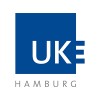
Targeted Noninvasive Brain Stimulation to Improve Hand Dexterity in Stroke Patients
StrokeThis study will investigate the use of High-definition Transcranial Direct Current Stimulation (HD-tDCS) in the functional improvement of hand dexterity while performing music-assisted hand exercises.

A Study of the Use of the Q Aspiration Catheter to Remove Clot in Stroke Patients
StrokeIschemicThe purpose of this study is to collect real-world safety and performance data on the MIVI Neuroscience, Inc. Q Aspiration Catheter for use in the removal of fresh, soft emboli and thrombi in the neurovascular system during acute ischemic stroke.

Mechanism and Outcome of Acute Ischemic Stroke in Cancer Patients
Ischemic StrokeCancerStroke is a part of circulatory diseases which are the primary cause of death in Egypt. It accounts 14% of all deaths thus ranks the 2nd after ischemic heart disease. Cancer accounts 9% of population mortality in Egypt. Nearly 108,600 Egyptians newly diagnosed with cancer each year. The interrelationship between stroke and cancer is complex. Cancer may directly or indirectly lead to stroke via: hypercoagulability, nonbacterial thrombotic endocarditis (NBTE), direct tumor compression of blood vessels or treatment-related effects which potentiate stroke. The risk of ischemic stroke after chemotherapy is largely increased by the use of certain types of chemotherapy not only by cancer histologic type. Brain infarction usually a subsequent complication appears sometimes shortly after chemotherapy. Chronic radiation vasculopathy that affects medium and large intra- and extra-cranial arteries is characterized by increasing rates of hemodynamic significant stenosis with time after radiotherapy. The study aims to clarify the relation between cancer and its treatment with ischemic stroke by discussing the different mechanisms by which a vascular insult happen causing neurological deficit. The study provides more information about cancer patients with higher risk to develop ischemic stroke more than other patients by identifying co morbidities and dosage of cancer treatment that causes cerebrovascular insults.

Interdisciplinary Platform for Rehabilitation Research and Innovative Care of Stroke Patients
StrokeObservational study of functional recovery of stroke patients after discharge from rehabilitation

Development of a Prognostic Tool for the Stratification of Cardiovascular Risk in Patients With...
StrokeIschemic3 moreThe availability of several high-cost strategies for the prevention of cardiovascular morbidity and mortality in patients with established cardiovascular disease highlights the necessity of reliable risk stratification of these patients. Several such prognostic models are available for patients with coronary artery disease; however, for patients with ischemic stroke, the available risk stratification schemes are very few and have several limitations. This study aims to develop a prognostication tool to stratify the risk of cardiovascular outcomes in patients with ischemic stroke. The development of a well-designed prognostication tool for the stratification of cardiovascular risk in patients with ischemic stroke may assist to the identification of the highest-risk patients and hence, provide useful information to clinicians and authoritative bodies when prioritizing high-cost strategies for secondary stroke prevention.

Ability of Changes in Analgesia Nociception Index to Assess the Stroke Volume Effects of a Volume...
Volume ExpansionFluid ResponsivenessVolume expansion is the cornerstone of perioperative hemodynamic optimization. The main objective of volume expansion is to increase and maximize stroke volume. Hemodynamic changes have an impact on the autonomic nervous system. The analysis of heart rate variability allows an exploration of the autonomic nervous system and could therefore provide information on the effect of volume expansion. The Analgesia Nociception Index (ANI) is an analgesia monitor based on the concept of heart rate variability. By deviating from its original use, the investigators wish to evaluate the ability of ANI to identify a response to volume expansion.

Stroke in Young Adults Outdoor Rehabilitation
StrokeThis research project aims to improve and promote physical activity participation in the outdoors and use outdoor walking as a form of long-term rehabilitation for young adults who have had a stroke. This research is specifically focused on adults of working age (e.g. 18 to 65 years classed as young adults) as there is little to no research or rehabilitation programmes for young adults who have had a stroke on how best to regain function and independence to return to social/leisure activities, employment and education. During this study, The investigators will measure how fast a young adult who has had a stroke walks, how much energy they use to walk and how their joints move when walking. The investigators will also use questionnaires to measure how confident a young adult who has had a stroke is and how they feel when outdoors. This project could highlight the positive role of exercising in outdoor natural environments to promote recovery following stroke in young adults. The investigators predict that an outdoor-walking rehabilitation programme could motivate the young stroke population to better engage in their rehabilitation, as walking in more challenging environments could facilitate an increase in the desire to walk outdoors and confidence.

Turkish Version of the Brief-BESTest Scale
Stroke PatientsThe aim of this study is to investigate the validity and reliability of the Turkish version of the brief-BESTest (short BESTest) scale in stroke patients.

SITS-IVT in Patients >80 Years Study
Ischaemic StrokeA non-interventional post-approval study on Safe Implementation of Treatment in Stroke - International Stroke Thrombolysis Register (SITS-ISTR) existing data of intravenous recombinant tissue plasminogen Activator (rt-PA) (0.9 mg/kg) in acute ischaemic stroke patients over 80 years, treated according to the Summary of Product Characteristics (SmPC) in European countries.

Smartphone and 3D Printing Based Home Rehabilitation System for Chronic Stroke
StrokeInterventions promoting optimum motor performance across the lifespan are a priority after a neurological insult such as stroke. The proposed research incorporates smart devices and 3D printing to create a patient-centered rehabilitation device, mRehab. This innovative blend of technology and principles of neuroplasticity can advance standards of practice in healthcare. In this feasibility study, it is hypothesized that individuals with chronic stroke can successfully use the portable rehabilitation unit, mRehab, at home with minimal oversight from the research team. Use of mRehab in a home based setting and functional changes in upper limb movement will be assessed.
